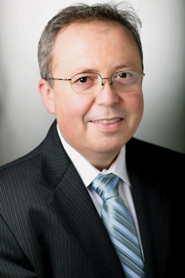Deutsche Bank’s new head of equity electronic trading, Jose Marques, wants the firm to build trading tools that take into account what algorithmic trading will look like tomorrow, how it will evolve.

Today’s buyside has been using algos that think like traders. Marques says clients need to have algos that think like automated traders–like machines.
During his first six months on the job at Deutsche Bank, Marques’ guiding directive has been to transform the firm’s algos into trading tools that more resemble the ones high-frequency traders use. The first algorithm Deutsche Bank rolled off its assembly line this spring, a dark pool-aggregator called SuperX, reflected this thinking.
"At Deutsche Bank, this is the key problem we’re trying to solve in electronic trading," Marques said. "We’re taking the best tools that statistical and low-latency traders use for providing liquidity and turning them into buyside tools for taking liquidity."
Marques joined Deutsche Bank from Credit Suisse, where he ran the firm’s CrossFinder dark pool. He is a 15-year veteran, who’s also held senior electronic trading roles at Morgan Stanley and Goldman Sachs. Marques said he jumped at the opportunity to make an impact in Deutsche Bank’s algo group.
As the marketplace has changed, today’s liquidity providers have evolved, Marques said. To his thinking, these aren’t the same brokers and market makers with whom buyside traders have golfed or shared information about their kids. Often, they’re quantitative statistical machines that view market complexity differently than a human mind does.
"They’re looking at it cross-sectionally and in milliseconds," Marques said. "They’re looking for statistical patterns in a very multidimensional, complex and dynamic data space."
But amid these changes, the buyside trader faces the same challenges. He still has a blotter full of large, high-impact orders that must be executed efficiently, without dislocating or impacting the market, Marques said. "But now his liquidity providers are a totally foreign thing, and there’s a real mismatch between the two," he added.
SuperX uses a statistical ranking model that analyzes the execution characteristics of each venue. It takes an order and determines the best place to trade, given the trader’s constraints and where the algo has found the least leakage in the stock. And if the order is creating too much market impact, the algo automatically backs off of the trade, Marques said.
But Marques’ approach to algorithms goes beyond one new algo. He wants to ingrain similar logic into all of the firm’s algos–those in use and those to come. This will entail some retrofitting, he added. Currently, his group is working on rebuilding its liquidity-seeking algo, called Stealth, with this new technology.
Furthermore, Deutsche Bank provides direct market access to around 80 markets worldwide. And its algos access roughly 66 of those markets, Marques said. Ultimately, the goal is to align Deutsche Bank’s market access and algo products around the globe with those in the U.S. and Europe
"This is important for the global-oriented clients," Marques said. "We’ve made a push for our algo behavior to be consistent and take into account the idiosyncrasies of local markets, to have a true global platform."
Also, Marques said he wanted to make Autobahn Equity, the firm’s electronic trading product, a better-integrated business. To do this, Autobahn’s entire staff now reports to him. That includes IT, trading, sales and product development.



